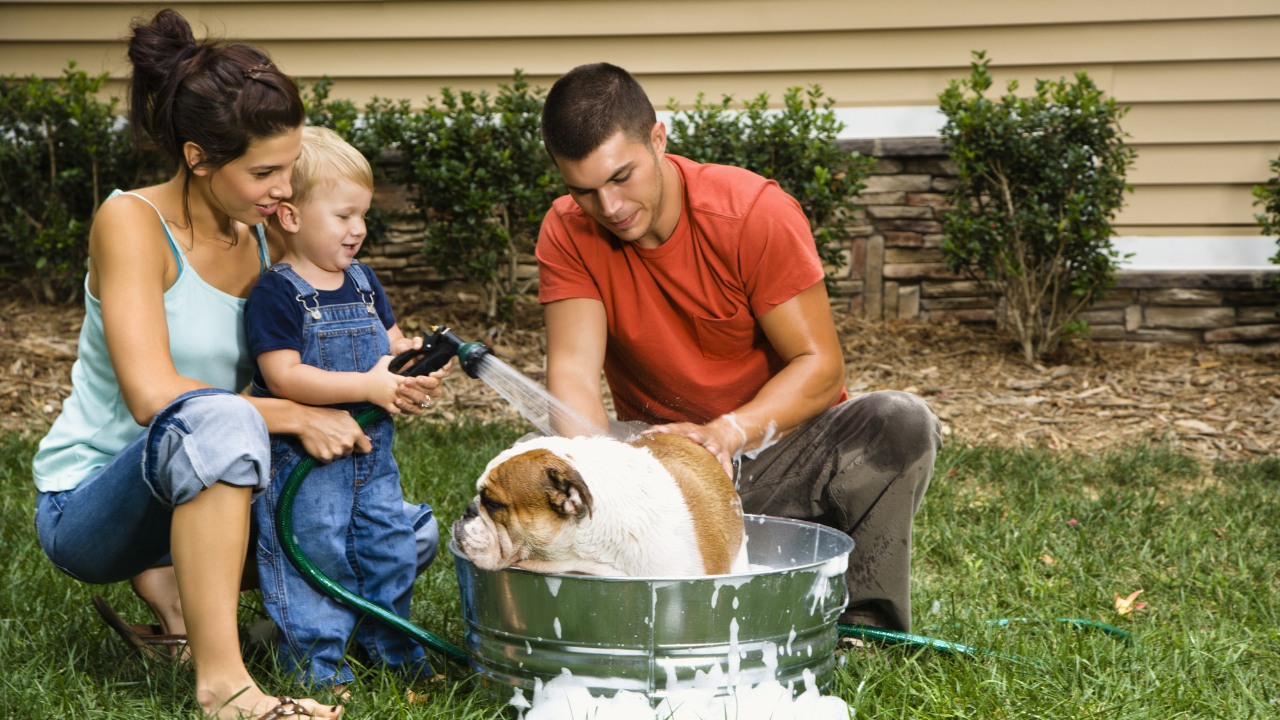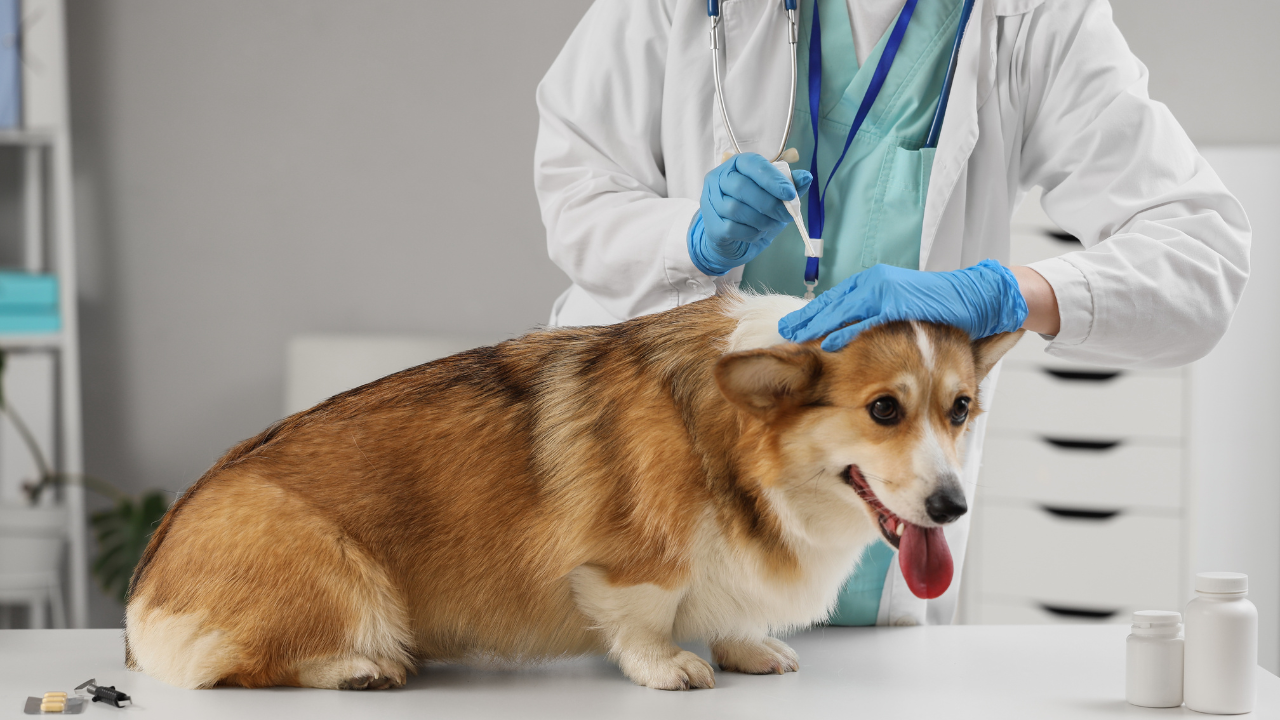How to Get Skunk Smell Off a Dog

Dogs are playful, curious, and sometimes mischievous. This curiosity can lead them into sticky situations like encounters with skunks. Skunk spray is not only foul-smelling but can also linger for days, making life uncomfortable for both you and your dog. Knowing how to get skunk smell off dog is essential for pet owners.
In this guide, we will cover everything from identifying skunk spray exposure to effective remedies, ensuring your dog returns to its normal, happy self. By following step-by-step instructions, you can tackle the odor safely and efficiently.
What is Skunk Spray?
Skunk spray is a defense mechanism produced by glands located near a skunk’s tail. This oily liquid contains sulfur-based chemicals known as thiols. These compounds are responsible for the powerful, rotten-egg-like odor that skunks use to deter predators.
The spray can travel up to 15 feet and is highly concentrated. Even a tiny amount on your dog’s fur can create a massive stink. The oil-based nature of skunk spray makes it stick stubbornly to fur, skin, and even fabrics.
In simple terms, skunk spray is a natural chemical weapon designed to last and repel. Unfortunately, your dog may end up on the wrong side of it.
Why Is Skunk Smell Hard to Get Off Dogs?
Skunk spray clings to dogs because of its oily texture. Unlike water-based stains, oil does not wash off easily. The thiols in the spray also bind strongly to proteins in your dog’s fur.
Additionally, these sulfur compounds are volatile, which means they continue to release odor into the air long after the spray has dried. That’s why your house, car, or even your clothes may carry the smell for days if not treated properly.
Regular shampoo or water alone cannot break down these chemicals. You need special cleaning agents that neutralize the thiols, not just mask them. That’s why understanding the right approach is crucial.
Signs of a Skunk Sprayed on Your Dog

You may not always see the skunk encounter, but the signs are obvious. Here are key indicators:
- Strong Odor: The smell is unmistakable and immediate.
- Red or Watery Eyes: Spray often irritates sensitive tissues.
- Excessive Drooling: Dogs may salivate if they inhale or lick the spray.
- Rubbing on Surfaces: Your dog may rub its face or body against the ground to get rid of the smell.
- Pawing at Face; If sprayed near the head, dogs often scratch or paw at their eyes and nose.
Recognizing these signs early helps you act quickly before the odor spreads further.
Symptoms of Skunk Spray Exposure in Dogs
While the odor is the biggest issue, skunk spray can also cause physical symptoms. These include:
- Eye Irritation: Burning, redness, and temporary blindness.
- Respiratory Distress: Difficulty breathing if inhaled in large amounts.
- Nausea and Vomiting: Dogs may gag or vomit if they ingest spray while grooming.
- Skin Irritation: Prolonged contact may cause itching or rash.
In rare cases, skunk spray can lead to anemia in dogs if ingested in high amounts. If symptoms worsen, consult a veterinarian immediately.
What to Do Immediately After Your Dog Gets Sprayed
Timing matters when handling skunk smell off a dog. The faster you act, the easier it is to neutralize the smell. Follow these immediate steps:
- Keep your dog outside to prevent odors from spreading inside.
- Check for injuries. Skunks may scratch or bite in self-defense.
- Wear gloves and old clothes, as skunk odor can transfer to your skin and clothes.
- Keep your dog calm, dogs may panic after being sprayed. A calm approach helps.
- Prepare a cleaning solution before touching your dog to avoid getting sprayed yourself.
Avoid using water at this stage, as it may spread the oils and make the smell worse.
How to Get Skunk Smell Off a Dog (Step-by-Step)

Follow this simple, step-by-step guide for the best way to get skunk smell off a dog quickly and safely.
Step 1: Mix a Neutralizing Solution
Prepare a homemade solution using:
- 1 quart of 3% hydrogen peroxide
- ¼ cup of baking soda
- 1 teaspoon of liquid dish soap
- Gloves
- Towels
Mix these ingredients in an open container. Do not store this mixture, as it may explode if sealed. Avoid using vinegar or commercial shampoos alone; they rarely neutralize thiols effectively.
Step 2: Apply the Solution
Wear gloves and apply the mixture directly to your dog’s fur. Work it thoroughly into the coat, avoiding the eyes, ears, and mouth. Let it sit for 5–7 minutes but not longer, as peroxide may bleach fur.
Step 3: Rinse Well
Use lukewarm water to rinse the solution off completely. Ensure no residue remains, as the leftover mixture may irritate the skin.
Step 4: Repeat if Needed
For severe spray exposure, a second application may be required. Avoid overdoing it to prevent skin dryness or irritation.
Step 5: Use a Pet-Friendly Shampoo
After neutralizing the smell, give your dog a gentle bath with a mild pet shampoo to restore coat softness. If you wonder what shampoo do dog groomers use, it’s usually a high-quality, pH-balanced formula that deeply cleans without harming the skin. Use a conditioner to nourish and moisturize the skin and coat.
This method is widely regarded as the best way to get skunk smell off a dog because it breaks down the thiols instead of just masking them.
Tips for Bathing a Skunk-Sprayed Dog

Bathing a skunk-sprayed dog can be challenging. Follow these tips:
- Use lukewarm water to help open hair follicles and wash away oils.
- Keep your dog calm with treats or a leash to prevent splashing.
- Wash your dog outdoors if possible, reducing indoor odor spread.
- Apply a dog-friendly conditioner after bathing to restore fur softness.
- Always dry a dog after a bath with towels instead of a dryer, since hot air can intensify odor.
Consistency matters. Sometimes the odor fades over a few days even after treatment.
How to Get Skunk Smell Off a Dog’s Face and Eyes
The face is the most sensitive area, and you need to be extra cautious.
- For the face: Use a soft cloth dipped in the peroxide-baking soda mixture. Gently dab around the muzzle and cheeks. Avoid direct contact with the eyes, nose, and mouth.
- For the eyes: If your dog’s eyes are red or irritated, flush them with plain saline solution or cool water. Do not use peroxide near the eyes.
- For the mouth: Rinse with fresh water if your dog licked the spray. Watch for drooling or gagging.
If irritation persists, seek veterinary help right away. Knowing emergency dog care steps like these can make a big difference in protecting your pet’s health.
Still Struggling with Skunk Smell? Learn Proven Techniques with PDGA

If the skunk odor refuses to go away, don’t worry, help is available. The professional dog grooming academy offers specialized courses that teach proven methods to eliminate stubborn skunk smells from dogs safely and effectively. But that’s not all. Expert-led PDGA courses also cover a wide range of grooming essentials, including coat care, handling anxious pets, managing shedding, ear and nail care, and maintaining overall hygiene. These practical lessons are designed for both pet parents and aspiring grooming professionals who want to gain confidence and expert knowledge. With PDGA, you don’t just learn how to fix a smelly situation, you also develop long-term grooming skills that improve your dog’s health and happiness.
Final Thoughts
Skunk encounters are a common hazard for adventurous dogs. Acting quickly, using the right cleaning solutions, and handling delicate areas carefully ensures your dog is comfortable and odor-free.
Knowing how to get skunk smell off a dog is part of responsible pet ownership. Keep emergency cleaning supplies ready, consider professional grooming for persistent odor, and follow prevention techniques to reduce future encounters.
As Purrfect Insights highlight, preparedness is key. Keep neutralizing supplies ready, and don’t hesitate to seek professional help when needed. With the right care and patience, your dog will be back to its cheerful, skunk-free self in no time.


